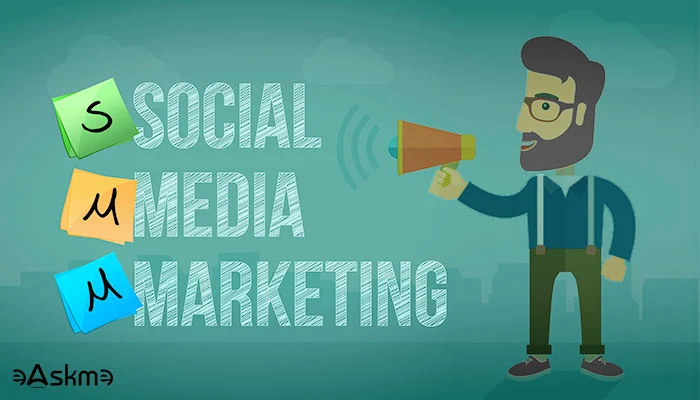Ads retargeting is an essential part of ad campaigns. You must understand what Retargeting is. How can you use success retargeting strategy for your business?
Google first addressed retargeting in 2010.
Now, businesses are using ad retargeting in a much more significant way.
 |
| Retargeting Ads: eAskme |
Is there no option you should use retargeting ads or not?
Ads retargeting is a must.
Now the question is, how should you use retargeting for your paid campaigns?
Whether a newbie or an expert marketer who wants to improve your retargeting strategy, you should know how to create retargeting campaigns.
Importance of Ads Retargeting:
Retargeting ads are pretty beneficial for eCommerce sites.
The eCommerce industry has a 0.7% to 4% conversion rate, which is relatively low. Low attention span is the reason. When people scroll a lot, they usually forget the product they are interested in. Therefore, retargeting ads help improve your marketing strategy.
People visiting your page for the first time may not be interested in purchasing anything.
For example, if only 4% of visitors want to buy from the site, then the rest, 96%, are not easy to convert.
If your retargeting ad tells people to buy your product, it will not yield any good results.
Your "Buy Now" retargeting ad will not make 96% of people convert.
What makes the retargeting ad successful?
- Audience behavior segmentation.
- Choosing the best ad platform.
- Serve the right audience to pitch the right message.
How Retargeting Ads Will Help You?
The retargeting ad is unsuccessful if it only pitches to people "Buy Now."
A successful retargeting ad will follow the next buying decision step.
Your retargeting ad should understand what your customer is looking for and the steps to help him make the final purchase decision.
To make it work for you, you need a remarketing strategy.
Tagging:
Tagging is the first thing you need to take care of when running retargeting ads.
Tags are helpful when you are targeting customers on apps or websites.
Each ad platform has a different pixel for retargeting ads.
Here are the most popular ad platforms for retargeting:
- Google Ads
- Facebook/Meta Ads.
- Twitter Ads.
- Microsoft Ads.
- Instagram Ads
- LinkedIn Ads.
- Twitter Ads.
- Snapchat Ads.
- TikTok Ads.
- Pinterest Ads.
Adding too many pixels to your website can slow down your website.
Therefore, it is best to use Google Tag Manager for effective management.
How do Tags Work?
Tags help to identify user behavior on your website. And use this data for ad targeting on different platforms.
The best thing about using tags is to get rid of third-party cookies. Google has already announced that the brand will remove third-party cookies.
This change has increased the need for retargeting ads.
Create Targeted Audiences:
The absence of third-party cookies will impact the ad retargeting.
Instead, you will need first-party data such as email address, contact number etc.
After collecting first-party data, you will have limitless segmentation opportunities such as;
- How do visitors come to your website or blog?
- How long do visitors stay on your website?
- What action visitor has completed?
- What products or categories have they viewed?
- Have they purchased anything?
- How much have they spent on watching videos?
- What offers have they found interesting?
- How have they engaged with your social media pages?
Be creative when creating retargeting ads to remarket your business.
Upload visitors' information on ad platforms to retarget users.
You can upload:
- First Name and Last Name:
- Email Address
- Phone Number
- Address, etc.
You can easily retarget the audience when your data matches the ad platform.
With the help of pixels and tags, you can easily create an audience based on behavior.
You can create remarketing lists after linking your Google ads account with your YouTube channel.
Message:
Once you understand your audience, choosing the right message is next.
Use different messages for different audience segmentations.
Dont look for the sale but look for the process that can lead the user to make the purchase.
Here is what you can do in different scenarios:
- For Product Awareness, create an informative page and lead the visitor to that page.
- Use qualifying factors for retargeting ads and make them download whitepapers.
- Lead people to lucrative offers once they complete an action.
- Don't use push marketing. Ads retargeting is about Pull marketing.
Ad Platform:
After choosing the tags, pixels, audience, and message, the next step is to choose the right ad platform for retargeting ads.
I have already shared the major ad platform for retargeting.
How to find the best retargeting platform for ads?
You can find the answer with these.
Critical Demographics of your audience.
Pages where the audience spends maximum time.
Why are you collecting user information?
The message you are sending to your audience.
You will find the answer to these questions when you dig deeper into user behavior and understand buyers' personas.
And with that answer, you will find the best retargeting ad platform.
Conclusion:
Use the above tips to see growth in conversion and revenue.
In the past few years, retargeting options have changed a lot.
Now, it is necessary to align retargeting with users' expectations.
Keep an eye on what is changing in the ads and marketing industry. It will keep you updated with the changes in retargeting strategies.
Still have any question, do share via comments.
Share it with your friends and family.
Don't forget to like us FB and join the eAskme newsletter to stay tuned with us.
Other handpicked guides for you;












